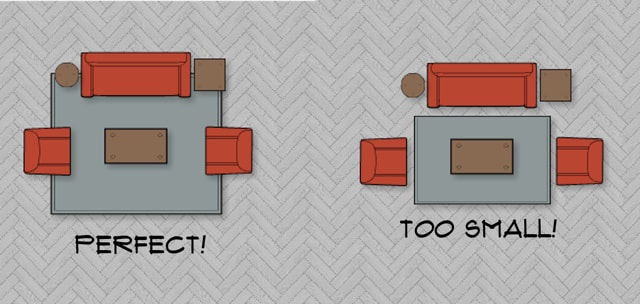It subdues noise, and it anchors the furniture to the room. Otherwise, the room can feel as though the furniture is floating, especially with a hard surface floor such as concrete, wood, or vinyl tile.
Too small a rug can make a room feel out of place, smaller and choppy. On the other hand, you can go almost wall to wall with a rug by leaving just a foot or two of border around the edges of the room. For example, a 14' x 18' bedroom will be nicely filled by an 11' x 14' rug, which can bring color,
texture, and warmth to the room.
The other way to determine size is to make sure the rug connects to the furniture and the functional area, since the main purpose of the rug is to define a space and give a visual line around all the pieces. In a large, open space for for example, where the living room connects to the dining room and the kitchen, several rugs could define and connect each living space. A large rug in the living room area could connect all the grouped seating pieces. Another rug would do the same thing for the dining table and chairs in the dining room. That way, each grouping area is clearly planted and defined by
each rug as zones of importance. This technique gives continuity to the whole space and finishes the total look of the open floor space with elegance, beauty, color, pattern, texture and warmth.
Tatiana Beckham
FLAIR INTERIOR DESIGN

 RSS Feed
RSS Feed